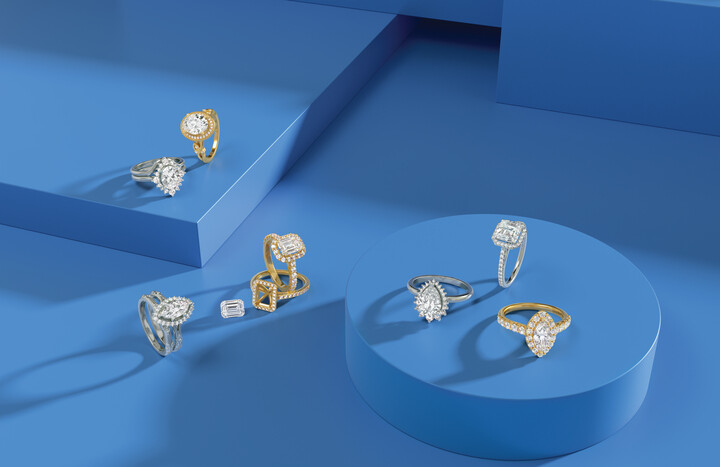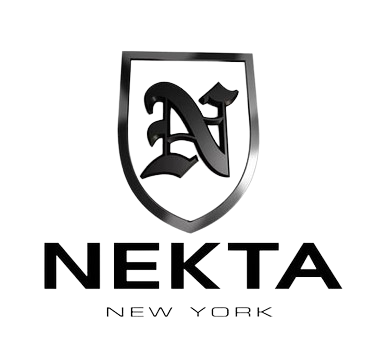
Are Lab Diamonds Real? The Truth Behind the Sparkle
The diamond industry is undergoing a significant change with the rise of lab-grown diamonds. These synthetic diamonds have caught the attention of consumers looking for alternatives to traditional mined stones. You might be wondering: are lab diamonds real? The answer is yes, as they have the same chemical composition as natural diamonds.
Lab diamonds are a technological breakthrough in gemstone creation. They are made in controlled laboratory environments, imitating the natural process of diamond formation. The outcome? Real diamonds that possess the same physical properties, brilliance, and durability as their mined counterparts.
The increasing popularity of lab diamonds can be attributed to several key factors:
- Significant cost savings compared to natural diamonds
- Ethical sourcing and environmental considerations
- Advanced technology ensuring high-quality production
- Identical appearance to mined diamonds
By understanding the authenticity and differences between lab-grown and natural diamonds, you can make confident purchasing decisions. As you explore your options, you'll discover how these innovative gems are reshaping the traditional diamond market while still retaining the timeless appeal of diamond jewelry.
Are Lab Diamonds Considered Real?

Lab diamonds are 100% real diamonds - identical to their mined counterparts in every meaningful way. These stones share the exact same chemical composition: pure carbon crystallized in a cubic structure. A lab diamond placed next to a natural diamond shows no distinguishable differences, even under professional examination.
The authenticity of lab diamonds is confirmed through their physical and optical properties:
- Chemical Structure: Both types are pure carbon crystals
- Hardness: Rate 10 on the Mohs scale
- Refractive Index: 2.417 - identical to natural diamonds
- Thermal Conductivity: Matches natural diamonds
- Crystal Structure: Cubic system arrangement
Professional gemologists require specialized equipment to differentiate between lab-grown and natural diamonds. These tools detect subtle growth patterns unique to lab diamonds - a testament to their near-perfect replication of nature's process.
Lab diamonds display the same fire, brilliance, and scintillation as natural diamonds. They react to light in identical ways, creating the signature sparkle that diamonds are famous for. The stones also exhibit similar inclusions and characteristics found in natural diamonds:
- Crystal growth patterns
- Color variations
- Internal features
- Surface markings
The primary distinction lies in their origin story - while natural diamonds form deep within the Earth over billions of years, lab diamonds emerge from controlled environments in a matter of weeks. This difference in formation doesn't impact their status as genuine diamonds, just as ice formed in your freezer is chemically identical to ice found in nature.
The cost advantage of lab diamonds stems from their controlled production environment, not from any compromise in quality or authenticity. These stones typically cost 30-70% less than natural diamonds of comparable quality, making them an attractive option for value-conscious buyers.
The Debate: Lab Diamond vs Natural Diamond
The main difference between lab-grown and natural diamonds is how they are formed.
Natural Diamonds
Natural diamonds are formed deep within the Earth's mantle over billions of years. They are created under extreme pressure and temperature conditions. These stones are brought to the surface through volcanic activity or mining operations, and each one has its own unique geological history.
Lab Diamonds
On the other hand, lab diamonds are created in controlled laboratory environments using specific processes such as CVD (Chemical Vapor Deposition) or HPHT (High Pressure High Temperature). Unlike natural diamonds, which take billions of years to form, lab diamonds can be produced in just a few weeks.
This faster creation process has sparked intense debate in the jewelry industry about how these two types of diamonds are valued.
How the Market Values Diamonds Differently
The market treats these origins differently:
Natural Diamonds
- Valued for their rarity and billion-year formation
- Seen as traditional symbols of luxury
- Hold stronger investment potential
- Command premium prices
Lab Diamonds
- Appreciated for technological innovation
- Viewed as modern alternatives
- Experience faster price depreciation
- Offer significant cost savings
Evolving Perception in the Diamond Industry
As lab diamonds gain popularity and market share, the perception of the diamond industry is also changing. Traditional jewelers often emphasize the romantic appeal of natural diamonds' ancient origins, while lab diamond producers focus on promoting technological advancement and accessibility.
This difference in origin stories influences various aspects of the diamond market, including marketing strategies, pricing structures, and consumer preferences.
The Role of Certification in Establishing Authenticity
Certification is crucial for confirming the authenticity of both lab-grown and natural diamonds. The Gemological Institute of America (GIA) uses the same strict standards to assess and grade these gemstones, looking at:
- Color grade
- Clarity characteristics
- Cut precision
- Carat weight
How GIA Distinguishes Lab-Grown from Natural Diamonds
The GIA's certification process includes advanced testing techniques to tell lab-grown diamonds apart from natural ones. This process also provides comprehensive documentation of the stone's features.
Unique Identification for Certified Diamonds
Every certified diamond gets a one-of-a-kind identification number that is laser-inscribed on its girdle. This ensures that each diamond can be traced back to its certification, adding an extra layer of authenticity.
Understanding Lab-Grown Diamond Certifications
Lab-grown diamond certificates have specific terms that indicate important information about the diamond:
"Laboratory-Grown" - Clear identification of origin
"This is a man-made diamond produced by CVD or HPHT growth processes" - Production method disclosure
"May include post-growth treatments" - Transparency about enhancement processes
These certifications guarantee the diamond's authenticity, quality, and origin. They also provide assurance that any treatments or enhancements done on the diamond are disclosed.
The Importance of GIA Certification
The GIA's reputation as the leading gemological laboratory worldwide adds credibility to both natural and lab-grown diamonds. This protects consumers from being misled or defrauded when purchasing these gemstones.
Advanced Techniques Used in Certification
The certification process involves sophisticated spectroscopic analysis and proprietary testing methods to verify the properties of the diamond. These techniques ensure that every certified lab-grown diamond meets the same quality standards as its natural counterpart.
Confidence in Your Purchase
With this scientific approach, you can have complete confidence in your purchase. You can be assured that the lab-grown diamond you are buying has undergone rigorous evaluation and meets the highest standards of quality.
Understanding Cost Differences: Lab Grown Diamonds vs Natural Diamonds
Lab-grown diamonds typically cost 30-70% less than their natural counterparts, making them an attractive option for budget-conscious buyers. This significant price difference stems from several key factors:
1. Production Time and Resources
- Natural diamonds form over billions of years
- Lab diamonds take weeks to create
- Controlled laboratory conditions reduce production costs
- Lower labor and resource requirements
2. Market Dynamics
- Limited supply of natural diamonds drives higher prices
- Growing availability of lab diamonds keeps prices competitive
- Natural diamond prices influenced by market speculation
- Lab diamond prices tied to production costs
3. Investment and Resale Considerations
- Natural diamonds maintain stronger resale value
- Lab diamonds experience steeper depreciation
- Natural stones viewed as traditional investment assets
- Lab diamonds primarily purchased for personal use
4. Price Variations by Quality
- Both types priced based on 4Cs (cut, clarity, color, carat)
- Lab diamonds offer higher quality at lower price points
- Natural diamonds command premium for rarity
- Larger natural stones increase exponentially in price
The rapid advancement in lab diamond technology continues to drive production costs down, while natural diamond prices remain relatively stable. This pricing dynamic creates distinct value propositions for buyers with different priorities and budgets.
Ethical Considerations in Choosing Between Lab-Created and Mined Stones
The ethical landscape of diamond production presents stark contrasts between lab-created and mined stones. Traditional diamond mining practices raise significant environmental concerns:
- Land Disruption: Diamond mining requires extensive excavation, leading to habitat destruction and soil erosion
- Water Usage: Mining operations consume vast quantities of water, affecting local communities and ecosystems
- Carbon Emissions: Heavy machinery and transportation in mining contribute to substantial carbon footprints
Lab-created diamonds offer compelling environmental advantages:
- Minimal Land Impact: Production occurs in controlled laboratory settings
- Reduced Water Consumption: Labs require significantly less water compared to mining operations
- Energy Efficiency: Many diamond labs now operate using renewable energy sources
The social impact of diamond mining includes concerns about worker conditions and community displacement. Lab diamonds eliminate these ethical concerns by creating controlled working environments with regulated labor practices.
The rise of eco-conscious consumers has sparked increased interest in lab diamonds. These stones appeal to buyers seeking to align their purchases with environmental values while maintaining the same quality and beauty as mined diamonds.
Customization Options with Lab-Grown Diamonds

Lab-grown diamonds offer customization possibilities that natural diamonds can't match. You can select specific characteristics to create your perfect stone:
1. Size Flexibility
Lab diamonds can be grown in any carat weight, from small accent stones to statement pieces.
2. Color Range
Choose from:
- Traditional colorless diamonds
- Fancy colors like pink, blue, and yellow
- Rare hues typically unavailable in natural diamonds
3. Shape Selection
Lab diamonds can be cut into any desired shape:
- Classic round brilliant
- Princess cut
- Oval
- Pear
- Emerald cut
- Custom designs
The controlled laboratory environment allows for precise specifications in the growing process. You can request specific clarity grades and customize the exact dimensions of your stone. This level of personalization makes lab diamonds particularly attractive for unique engagement rings and custom jewelry pieces.
The ability to grow diamonds with predetermined characteristics also means shorter waiting times compared to sourcing specific natural diamonds, giving you faster access to your ideal stone specifications.
Making an Informed Decision: Lab Diamonds or Natural Diamonds?
When it comes to choosing between lab-grown and natural diamonds, it’s truly a personal journey—one that deserves expert guidance. As someone who has spent years helping clients in the heart of New York City’s Diamond District, let me give you my perspective on what to consider:
Authenticity: There’s no question—lab-grown diamonds are real. Chemically, physically, and optically, they’re identical to natural diamonds. When you shop with me, you get genuine diamond beauty and quality, regardless of which type you select.
Cost Considerations:
- Lab-grown diamonds can cost 30-70% less than their natural counterparts
- Natural diamonds often retain better investment value over time
- Certification is essential for both types—always insist on it
Ethical Impact:
- Lab-created diamonds offer a minimal environmental footprint
- You never need to worry about conflict sourcing with lab stones
- The carbon footprint is significantly reduced
Personal Preferences: At the end of the day, think about what matters most to you:
- Are you working within a set budget?
- Do sustainability and ethical sourcing guide your choices?
- Are you looking at your diamond as a long-term investment?
- Is customization or a rare shape important to you?
- Does tradition or cultural significance play a part in your decision?
There is no “one size fits all” answer here—and that’s where having a trusted jeweler comes in. Some clients find lab-grown diamonds perfect for their priorities: sustainability, cost-effectiveness, and custom possibilities. Others cherish the story and timeless value of natural diamonds.
If you want clarity on what’s right for you, I invite you to schedule a one-on-one consultation with me at my Diamond District showroom. Let’s sit down together, compare options side by side, and find the diamond that perfectly matches your vision. Book your private viewing today—with Mike Nekta, expert guidance is always part of the experience.
